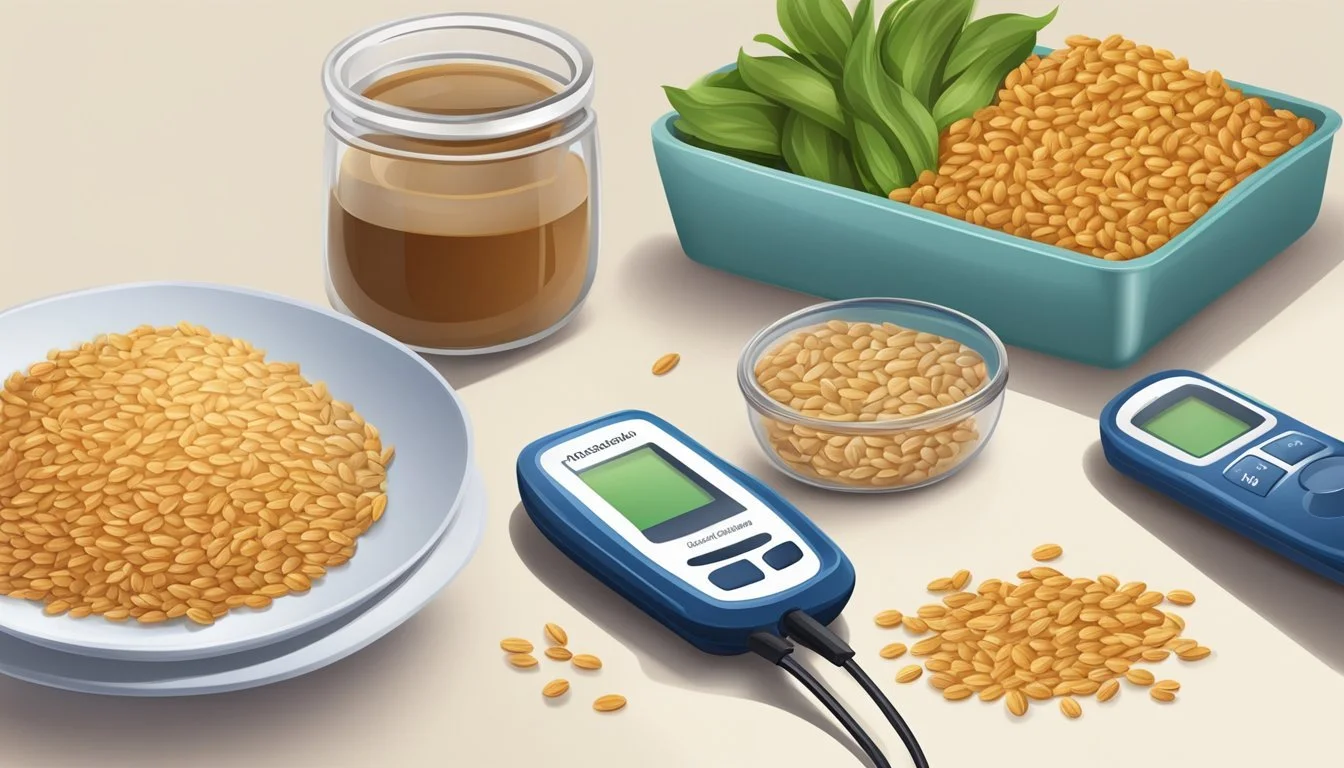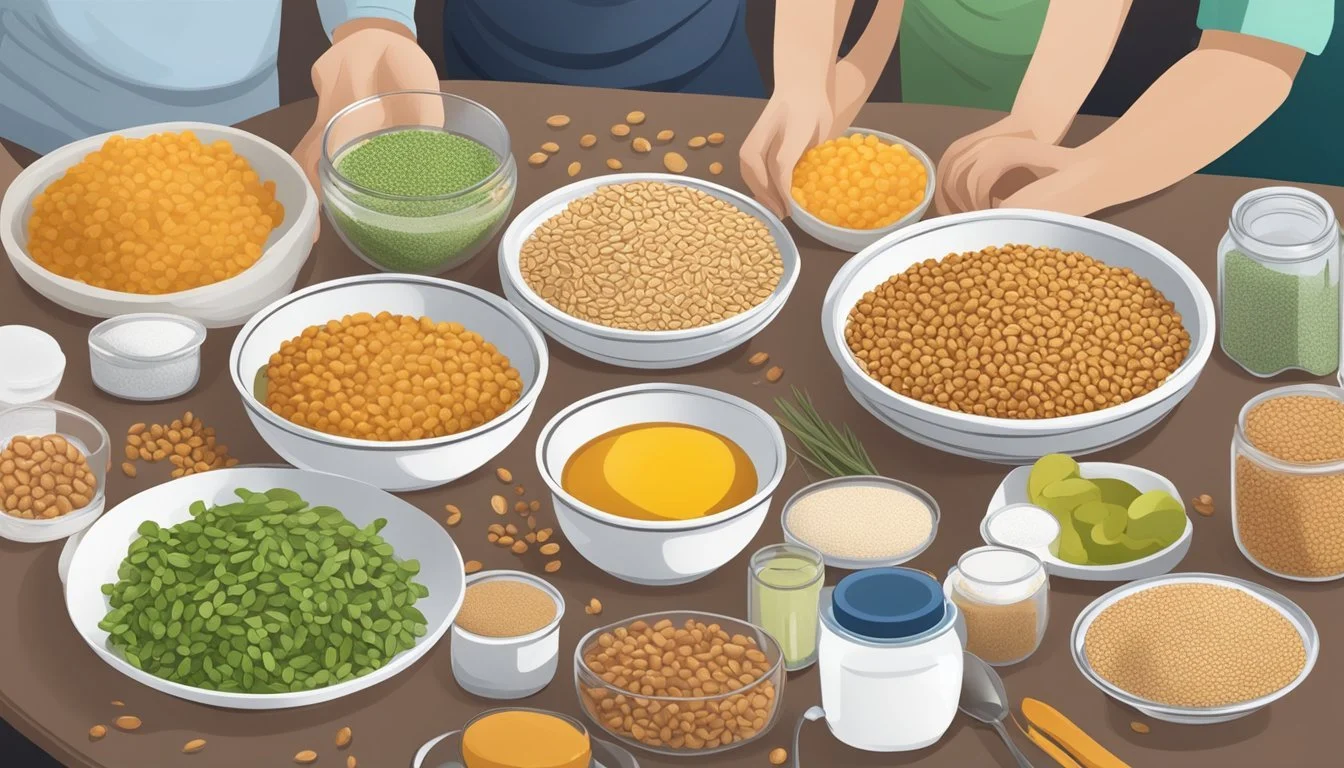Can Diabetics Eat Triticale?
Benefits and Considerations
Diabetics often wonder which foods they can safely include in their diet, and the grain triticale is one such food that's worth exploring. Triticale is a hybrid of wheat and rye, known for its nutritional benefits and unique blend of characteristics from both parent grains. Diabetics can eat triticale, but it should be consumed in moderation as part of a well-balanced diet.
Triticale offers high fiber content, which can be beneficial for managing blood sugar levels. Its complex carbohydrates provide a slow and steady release of glucose into the bloodstream, helping diabetics maintain better glycemic control. Moreover, triticale contains essential nutrients like protein, vitamins, and minerals that support overall health.
Incorporating triticale into meals can be a smart choice for those managing diabetes while seeking to diversify their whole grain options. By choosing whole grains like triticale, diabetics can enjoy a nutritious and satisfying addition to their diet.
What Is Triticale?
Triticale is a hybrid grain resulting from the crossbreeding of wheat (Triticum) and rye (Secale). Combining these grains enhances certain desirable traits.
Wheat contributes great yields and wide adaptability, while rye provides hardiness and resistance to various soil conditions.
Triticale maintains gluten from its wheat parent, catering to certain baking needs.
Nutritionally, triticale stands out. It offers more protein and dietary fiber compared to its parent grains. Essential nutrients such as manganese, iron, and zinc are abundant in triticale.
Nutritional components found in triticale include:
Protein: Higher than wheat and rye
Fiber: Essential for digestive health
Vitamins and minerals: Rich in B vitamins, iron, and magnesium
Its versatile nature makes it applicable in various food products ranging from bread to cereal, offering a more nutritionally dense alternative to traditional grains.
Nutritional Profile of Triticale
Triticale, a hybrid of wheat and rye, offers a distinct nutritional profile that includes high levels of protein, dietary fiber, and essential vitamins and minerals. It also provides a good source of complex carbohydrates while maintaining a low fat content.
Macronutrient Content
Triticale provides a balanced macronutrient profile, making it beneficial for those mindful of their dietary intake. It contains 336 calories per 100 grams, offering ample energy. Protein content is notably high, supporting muscle health and overall body function. The complex carbohydrates in triticale are ideal for sustained energy release, and the grain is low in fats, making it a heart-healthy choice.
Vitamins and Minerals
Triticale is rich in several essential vitamins and minerals. It includes significant amounts of magnesium, iron, calcium, zinc, thiamin, and riboflavin. Magnesium aids in muscle and nerve function, while iron is vital for blood health. Zinc supports immune function and calcium is crucial for bone health. The B vitamins (thiamin, riboflavin) help in energy metabolism and brain function.
Fiber and Whole Grain Benefits
One of the standout features of triticale is its high dietary fiber content. This fiber aids in digestive health, helps regulate blood sugar levels, and can assist in maintaining a healthy weight. As a whole grain, triticale also contains beneficial antioxidants and phytochemicals that contribute to overall health. Its low glycemic index helps in better blood sugar control, which is particularly beneficial for diabetics.
Glycemic Impact of Triticale
Triticale is a hybrid cereal that presents unique effects on blood sugar regulation. By analyzing how triticale influences blood sugar response and comparing it to other grains, one can better understand its potential impact on diabetic diets.
Blood Sugar Response
Triticale’s glycemic index (GI) is a critical measure to consider. GI indicates how quickly food raises blood sugar levels. Foods with a lower GI are better for blood sugar control. Triticale tends to have a moderate GI, which means it raises blood sugar more slowly compared to high-GI foods.
Dietary fiber in triticale contributes to a steady release of glucose into the bloodstream. This helps maintain more stable blood sugar levels than refined grains. Additionally, triticale supplies essential minerals like manganese and magnesium, which play roles in insulin production.
Comparisons with Other Grains
When compared to common grains like wheat and rye, triticale offers a unique profile. Its glycemic impact is generally lower than refined wheat products. Whole grains, such as oats or barley, might offer similar benefits, but triticale's blend of fibers and minerals provides added advantages.
In a diabetic diet, substituting triticale for high-GI grains can help in managing blood sugar more effectively. Its rich content of dietary fiber and protein also equates to a slower absorption rate of carbohydrates, contributing to a more moderated glycemic response.
Diabetes Management and Diet
Diet plays a crucial role in managing diabetes effectively. Proper meal planning helps in regulating blood glucose levels and maintaining a stable A1c.
Incorporating Triticale into a Diabetic Diet
Triticale is a hybrid grain derived from crossing wheat and rye. It offers high fiber content and essential nutrients. Including triticale in a diabetic eating plan may help in stabilizing blood sugar levels due to its low glycemic index.
Fiber in triticale aids in slow digestion, reducing the rate at which glucose is absorbed. This can prevent spikes in blood glucose. For diabetics, this property is beneficial in maintaining a stable A1c.
Preparation is straightforward. Triticale flour can replace regular flour in baking. Whole triticale can be used in salads or as a side dish. Portion control remains essential to prevent overconsumption and to keep blood sugar levels in check.
Using triticale creatively within meals can add variety while supporting diabetes management.
Health Benefits of Triticale
Triticale is beneficial for heart health, weight management, and digestive health. These benefits are essential for people managing diabetes and those looking to improve their general well-being.
Heart Health
Triticale contains nutrients that support cardiovascular health. Its high fiber content helps reduce cholesterol levels, which can lower the risk of heart disease.
The presence of niacin (vitamin B3) in triticale aids in improving blood circulation.
Potassium, another essential nutrient found in triticale, helps to regulate blood pressure, making it beneficial for maintaining a healthy heart.
Weight Management
Triticale can be a valuable addition to a diet aimed at weight loss. Its high fiber content promotes satiety, helping individuals feel fuller for longer periods and reducing overall calorie intake.
Fiber-rich foods like triticale can regulate blood sugar levels, preventing insulin spikes that often lead to increased hunger and cravings.
Triticale also provides a good source of protein, which is crucial for muscle maintenance during weight loss.
Digestive Health
The high fiber content in triticale aids in promoting digestive health by facilitating regular bowel movements and reducing the risk of constipation.
Dietary fiber acts as a prebiotic, supporting the growth of beneficial gut bacteria. This can enhance nutrient absorption and overall gastrointestinal function.
Additionally, the presence of wheat and rye in triticale ensures it carries the digestive benefits of both grains, helping to improve digestive efficiency and reducing digestive disturbances.
Possible Risks and Considerations
While triticale offers a variety of nutritional benefits, it is important to be aware of potential risks, especially for individuals with specific health conditions like diabetes.
Gluten Content
Triticale contains gluten, a protein found in wheat, rye, and barley. For people with celiac disease or gluten intolerance, consuming triticale can trigger adverse reactions. Symptoms may include digestive issues, joint pain, and fatigue. Diabetics with coexisting gluten sensitivities should avoid triticale to prevent complications.
Even those without celiac disease might experience discomfort if they have gluten sensitivity. A gluten-free diet may be necessary for these individuals. Monitoring for symptoms and consulting healthcare providers is essential for safe consumption.
Allergic Reactions and Intolerances
Beyond gluten, some individuals may experience allergies or intolerances related to triticale. These allergic reactions can range from mild to severe. Symptoms may include skin rashes, hives, and respiratory issues.
Triticale might also cause intolerance due to its lectin and phytic acid content. These compounds can interfere with nutrient absorption. Diabetics should be particularly cautious as nutrient deficiencies can exacerbate their condition. Ensuring proper diagnosis of any food sensitivities is crucial for maintaining health.
Triticale in Culinary Uses
Triticale is a versatile grain used in various culinary applications. Its unique texture and nutritional profile make it an appealing choice for baking and cooking, and it can effectively replace other grains in many recipes.
Baking and Cooking
Triticale flour is frequently used in baking due to its high protein and fiber content. Bakers often use it to make bread, muffins, and cookies, bringing a hearty texture and rich nutritional benefits to the products.
In cooking, triticale can be added to soups, stews, and salads for enhanced flavor and texture. Its high fiber content helps regulate blood sugar, making it suitable for those managing diabetes.
Substituting Triticale for Other Grains
Triticale can serve as a substitute for traditional grains like wheat and rye. In baked goods, it can replace wheat flour to create a product with more fiber and protein. This substitution maintains the structural integrity of breads and pastries while providing additional health benefits.
For cooking, triticale kernels can replace rice or barley. Use it in dishes ranging from risottos to grain bowls. The grain's adaptability helps meet various dietary needs, making it a valuable addition to a diabetic-friendly diet.
Expert Opinions and Research
Recent inquiries into the consumption of triticale by individuals with diabetes have yielded important insights. This section discusses the relevant studies and dietitian recommendations to provide a clear understanding of triticale's implications for diabetic diets.
Current Studies on Triticale and Diabetes
Scientific studies investigating triticale and its effects on blood sugar levels present encouraging data. Research indicates that triticale, a hybrid of wheat and rye, contains high levels of dietary fiber, which can aid in slowing glucose absorption. This characteristic makes it a potentially beneficial grain for people managing diabetes.
Additionally, the mineral content in triticale, which includes magnesium and zinc, plays a role in enhancing insulin sensitivity. Studies also suggest that the inclusion of triticale in a balanced diet may help in maintaining stable blood sugar levels. However, further research is needed to fully understand its long-term impact on diabetes management.
Dietitian Recommendations
Dietitians highlight triticale as a grain worth considering for those with diabetes, thanks to its nutritional profile. Anne Wright, a nutrition expert, emphasizes that the high fiber content can aid in blood sugar control. Dietitians recommend incorporating triticale in moderation, as part of a diverse diet, to reap its benefits without risking spikes in blood glucose levels.
Guidance from the American Diabetes Association suggests that whole grains like triticale can be an effective part of a diabetes-friendly diet. It's important, though, to monitor portion sizes and balance triticale consumption with other nutrient-rich foods to maintain optimal health outcomes.
Conclusion
Incorporating triticale into a diabetic's diet can be a thoughtful choice due to its high dietary fiber and low glycemic index. These properties help in slowing the absorption of glucose, making it a beneficial grain for managing blood sugar levels.
A balanced diet for someone with diabetes should include various sources of nutrients. Triticale provides protein, minerals like manganese, iron, and zinc, and essentials such as phosphorous and calcium.
Nutritional Profile of Triticale
Nutrient Benefit Dietary Fiber Promotes healthy digestion Protein Supports muscle maintenance Manganese Necessary for bone health Iron Crucial for blood production Zinc Supports immune function Phosphorous Important for energy storage Calcium Essential for strong bones
People with diabetes often aim for a balanced diet and effective blood sugar management. Including complex carbs like those found in triticale can be a wise step towards achieving these goals.
Maintaining a healthy lifestyle involves making informed choices about food. Triticale's nutrient profile supports diverse dietary needs without causing drastic blood sugar spikes. This makes it a suitable option for those seeking to manage diabetes through diet.











